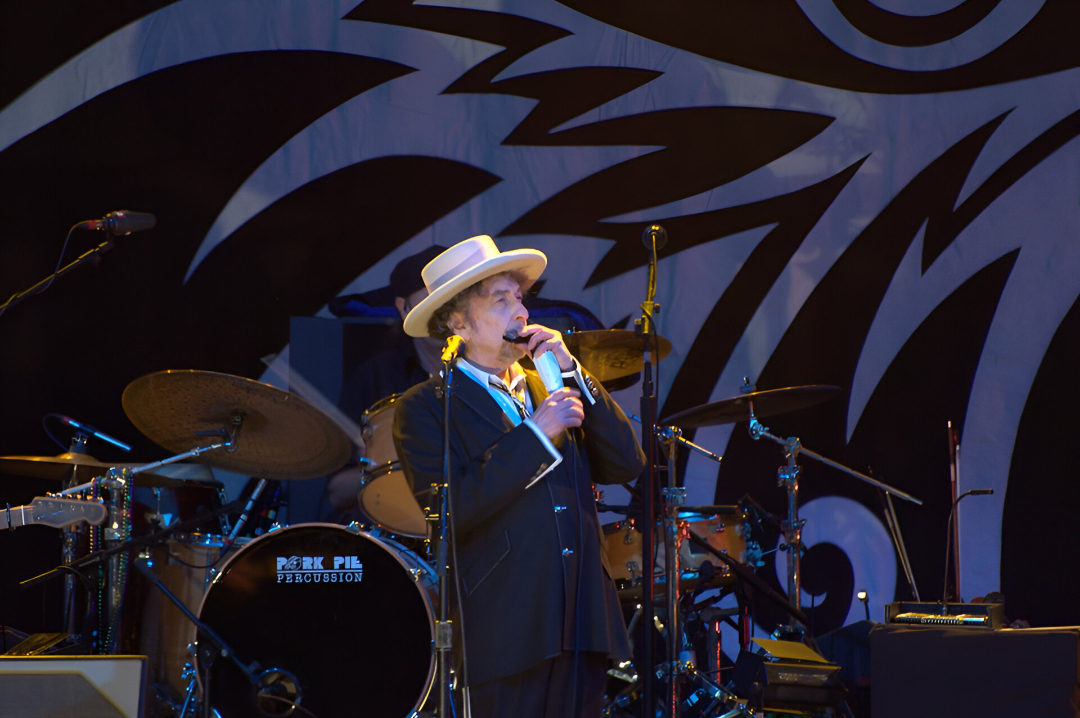
Seattle’s grunge explosion produced many casualties, but Pearl Jam emerged as survivors who redefined what rock stardom could mean. You know their anthems, but their real story runs deeper than chart positions and stadium shows. These musicians didn’t just ride the alternative wave—they shaped it while maintaining principles that would make most industry executives break out in hives. From courtroom battles to charity work, their journey reveals how authentic artistry can coexist with commercial success without selling your soul to corporate overlords.
18. ‘Vitalogy’ Predicted Vinyl’s Resurrection Decades Early

When the music industry had abandoned vinyl for CD convenience in 1994, Pearl Jam’s ‘Vitalogy’ release strategy read like a love letter to analog purists. Releasing vinyl two weeks before CD and cassette formats elevated physical records from nostalgic relics to preferred medium. The LP’s number 55 chart position proved their gamble found hungry audiences craving authentic experiences over digital convenience—very Matrix red pill vs. blue pill energy.
Epic Records invested heavily in vinyl production despite higher manufacturing costs, demonstrating the band’s leverage and commitment to sound quality over profit margins. This embrace of vinyl’s rich sound and tactile experience foreshadowed today’s resurgence by nearly two decades, proving that sometimes looking backward creates the most forward-thinking art.
17. Adrenaline Addiction Extends Beyond Music

The nickname “Crazy Eddie” wasn’t bestowed lightly. When not commanding stadium stages, Vedder seeks thrills through activities that would make insurance agents hyperventilate. Scaling concert venue girders and cliff-jumping reveal someone for whom emotional intensity extends beyond music into physical risk.
Surfing remains his true north—both thrill and meditation combined. Water imagery flows through lyrics like currents, from “Even Flow” to “Amongst the Waves,” revealing how deeply this passion permeates creative processes. Music becomes “riding the wave into the shoreline”—controlled surrender defining both pursuits.
16. The Pearl Jam Name Origin Story Was Complete Fiction

Rock mythology loves a good origin story, and Pearl Jam fed fans exactly what they wanted for years. The tale of great-grandmother Pearl and her legendary hallucinogenic preserves spread through music magazines like wildfire, becoming accepted truth among devotees who craved meaning behind their favorite band’s moniker.
Reality crashed this fantasy when the band confessed in 2006 that the whole story was fabricated nonsense. Jeff Ament casually suggested “Pearl” during a restaurant brainstorming session, Eddie added “Jam” to reference their improvisational style, and that was it. Sometimes legendary bands have thoroughly ordinary beginnings.
15. Family Life Anchored His Rock Star Existence

Eddie’s 1994 marriage to Beth Liebling represented his early career’s intensity—passionate but ultimately unsustainable, ending in 2000 as Pearl Jam navigated fame’s complexities. His 2010 Hawaiian ceremony with Jill McCormick, attended by Sean Penn and Jack Johnson, reflected evolution toward more grounded existence.
Daughters Olivia and Harper provide counterweight to rock stardom’s gravitational pull, keeping him tethered to ordinary joys. Through industry upheavals and personal transformations, Eddie constructed a family foundation serving as both refuge and inspiration—a redemptive narrative rarely found in rock’s often tragic storylines.
14. Pre-Pearl Jam History Built Seattle’s Foundation

Stone Gossard and Jeff Ament’s musical partnership predates Pearl Jam by years, forged in Seattle’s primordial grunge scene. Green River collaboration helped establish sonic blueprints that would later define a generation. When that project dissolved, Mother Love Bone formed—a band poised to break through before tragedy intervened.
Andrew Wood’s fatal overdose threatened to extinguish their creative partnership entirely. Resilience manifested in demo tracks created amid grief, searching for new direction. When drummer Jack Irons passed their tape to San Diego vocalist Eddie Vedder, he unknowingly created the connection transforming rock history.
13. Band Chemistry Defied Industry Breakup Statistics

Creative differences shatter bands like glass, but Pearl Jam’s endurance resembles a well-crafted instrument improving with age. Their 2017 Rock and Roll Hall of Fame induction highlighted not just musical legacy but remarkable cohesion. Matt Cameron, Mike McCready, and Stone Gossard each brought distinct elements creating something greater than individual parts.
Despite cycling through early drummers—potential fracture points for lesser bands—they maintained core vision through decades of industry turbulence. Success wasn’t accidental but built on deliberate communication, shared artistic goals, and flexibility to evolve together.
12. Ticketmaster Battle Made Them Industry Rebels

Pearl Jam’s 1994 Ticketmaster stance reads like David challenging Goliath with guitars instead of slingshots. While the band capped ticket prices at $18 with service fees under $1.80, Ticketmaster dominated the market with massive annual revenues from service fees that often doubled ticket costs. This disparity prompted their unprecedented antitrust complaint.
Department of Justice investigation abandonment didn’t stop them—they toured exclusively non-Ticketmaster venues throughout 1995, sacrificing convenience and larger audiences for principles. Though producing limited immediate results, their battle planted seeds for today’s ticket pricing transparency conversations and current legislative efforts to combat “junk fees.”
11. Early Fan Relationships Defied Celebrity Conventions

Early Pearl Jam shows revealed a frontman determined to dissolve barriers between artist and audience. Eddie regularly lingered after performances, engaging with fans as equals rather than admirers. Personal letter responses and unusually direct communication marked approaches unimaginable in today’s celebrity landscape.
Growing fame eventually required recalibrating this accessibility, forcing necessary boundaries that celebrity status unfortunately demands. This evolution reflects the complex reality of maintaining authenticity while navigating worldwide recognition’s pressures. Genuine connection became strategic interaction—a trade-off every successful artist eventually faces.
10. Video Rejection Prioritized Music Over Image

Pearl Jam’s music video relationship traces an arc from embrace to rejection paralleling their complex dance with fame itself. Early ‘Ten’ videos culminated in “Jeremy,” capturing four MTV Video Music Awards in 1993 and catapulting them to household name status through powerful visual storytelling.
Subsequent retreat from the format wasn’t casual but deliberate—recognition that visual imagery was overshadowing musical messages. Reducing visual presence redirected attention to sonic artistry rather than personalities. This decision came at potential commercial cost but aligned perfectly with artistic integrity principles.
9. Temple of the Dog Bridged Past and Future

Chris Cornell’s Temple of the Dog formation stands as rock’s most poignant tribute—a musical memorial to Andrew Wood that unexpectedly became Pearl Jam’s bridge to the future. This supergroup united Soundgarden’s frontman with Gossard, Ament, Cameron, McCready, and newcomer Vedder in a project named from Mother Love Bone lyrics.
“Hunger Strike” emerged as their defining moment—a powerful duet showcasing Cornell and Vedder’s complementary vocal strengths. Initial modest sales of 70,000 copies exploded once Pearl Jam’s name appeared on packaging, transforming homage into commercial success.
8. Eddie Vedder’s Turbulent Childhood Shaped His Voice

December 23rd, 1964 brought Edward Louis Severson III into a world that would quickly teach him about abandonment and resilience. His parents’ divorce during infancy left emotional scars that would later fuel some of rock’s most vulnerable lyrics. When his mother remarried, he became Eddie Mueller—a name that never quite fit his restless spirit.
Home tensions pushed him toward music’s solace, where he discovered a voice that could transform personal pain into universal connection. By 15, Eddie had moved out, supporting himself through various jobs while his grades suffered under the weight of premature independence.
7. “Last Kiss” Became Their Biggest Hit Through Accident

Ultimate rock irony: Pearl Jam’s highest-charting single wasn’t an original composition but J. Frank Wilson’s 1964 tragedy ballad “Last Kiss.” Their journey with the song began organically during a small Seattle club performance. After a promising soundcheck run-through, they captured raw recording maintaining emotional authenticity.
Released as their 1998 fan club Christmas single with minimal mixing investment, this modest gift unexpectedly became their commercial peak. Evolution from obscure track to mainstream hit demonstrates how authentic musical choices often resonate more powerfully than calculated commercial strategies.
6. Hawaii Became His Spiritual Refuge

Hawaii transcends vacation destination status for Vedder—it’s become a second home and spiritual sanctuary. His deep connection to the islands reflects appreciation for places offering both natural beauty and genuine human connection. Frequent performances and charitable work demonstrate commitment to communities that have welcomed him.
Support for local Hawaiian causes shows how his social conscience extends to places that ground his celebrity in real community engagement. This relationship represents authentic connections cultivated beyond the music industry, providing stability away from spotlight pressures.
5. Sobriety Set Him Apart From Grunge’s Dark Side

Grunge became synonymous with substance abuse, claiming luminaries like Kurt Cobain, but Eddie charted a different course through the era’s temptations. Despite battles with depression—often evident in vulnerable lyrics—he maintained remarkable clarity about chemical escape routes and their dead ends.
Avoiding hard drugs proved prophetic as he watched contemporaries succumb to addiction’s grip. Moderate drinking habits never derailed creative focus or personal stability. His longevity stands as living proof that artistic intensity doesn’t require chemical enhancement—a lesson as relevant today as during grunge’s heyday.
4. AT&T Censorship Sparked Digital Free Speech Fight

The 2007 Lollapalooza broadcast through AT&T’s Blueroom platform became an unexpected battleground when the company censored Vedder’s lyrics criticizing President George Bush during “Another Brick in the Wall.” This digital erasure represented collision between corporate control and artistic freedom in the internet age—foreshadowing today’s platform moderation controversies.
Pearl Jam’s immediate website condemnation transformed a technical issue into AT&T’s public relations crisis, forcing quick apologies. This incident revealed how even established artists remain vulnerable to corporate censorship in digital spaces while highlighting their unwavering commitment to free expression that resonates stronger than ever in our current social media landscape.
3. The West Memphis Three Case Became His Crusade

When three teenagers were wrongfully convicted of murdering three boys in Arkansas, Vedder didn’t just acknowledge another system failure—he became their most visible champion. His discovery of their plight in 1993 transformed longstanding criticism of America’s prison system into focused action.
Benefit concerts turned spotlights toward a case many had forgotten. When new DNA evidence emerged in 2011 supporting innocence claims, years of advocacy finally bore fruit. Their eventual release after eighteen years proved that sometimes the most powerful lyrics are actions that change real lives.
2. ‘Ten’ Required Perfectionism to Achieve Timelessness

Seattle’s gold rush saw record labels descending like prospectors, each hoping to strike the next Nirvana. Mother Love Bone’s previous substantial deal established high expectations, contrasting sharply with Green River’s humble recording budget. Industry interest created both opportunity and pressure for the newly formed Pearl Jam.
‘Ten’ represented significant financial investment requiring additional resources for proper mixing—a gamble that paid off exponentially. Keeping the original demo version of “Alive” while recording “Even Flow” numerous times demonstrated perfectionism that history would validate completely.
1. Vedder Transforms Celebrity Platform Into Social Action

Eddie wields his microphone like a spotlight, illuminating causes that might otherwise remain invisible. His outspoken opposition to political policies reflects fearlessness that extends far beyond music venues. Death row advocacy, animal rights, reproductive freedom—he champions issues that demand genuine courage to address publicly.
The 2006 Vitalogy Foundation founding transformed individual activism into institutional change. His co-founding of the EB Research Partnership demonstrates commitment to addressing overlooked medical challenges. Pearl Jam donates concert proceeds to social causes, creating direct pipelines from their success to meaningful community impact.





















